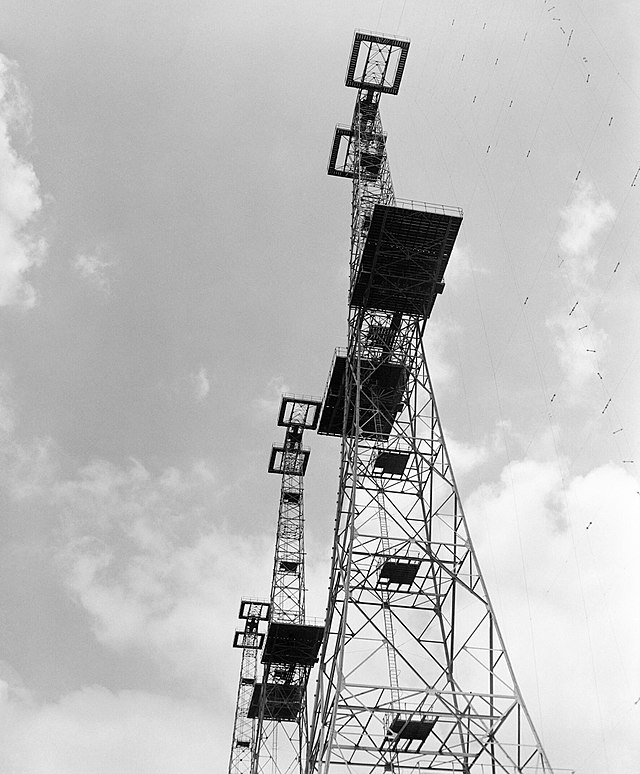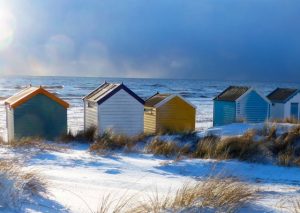Between the two World Wars, radar technology was developed and tested in Suffolk. Today, you can visit the place where much of the groundbreaking work was practised. In 1937, RAF Bawdsey was the first of many radar stations to be established along the British coast. In the Battle of Britain, the RAF’s planes were outnumbered by 2,600 to 640. However, the use of radar to detect planes en route and intercept them saved the day.

The History of Bawdsey Radar Station
After WWI, there were extensive discussions regarding the protection of the country against attacks. This notion took off when the first air-defence exercise occurred in 1934.
More than half the bombers got to their destination despite the targets and routes being known. The notion of radio “death rays” that would destroy or incapacitate pilots and their planes was investigated by the Air Ministry.
The Scottish physicist Robert Watson-Watt, the descendant of James Watt, who invented the first working steam engine, was asked for his opinion on radio research. Watson-Watt dismissed death rays as a notion, but he suggested that radio beams might be used to detect enemy aircraft by bouncing them off them. His ideas were then summarized in a memo, but enthusiasm for them was followed by demands for proof that they would work.
A BBC transmitter was used on February 26 in 1935 to demonstrate the Arnold Wilkins and Watson-Watt system, which had the ability to detect any bomber as a test target. During May 1935, Wilkins, Watson-Watt, and a handful of scientists set out to Orfordness in Suffolk to conduct a set of experiments across the water that would culminate in the world’s first operational ‘RADAR’ system. Bawdsey Manor Estate, which was purchased for £24,000 to serve as the headquarters of the project, soon proved to be inadequate for further research.
A workshop system was established at Bawdsey Manor House and the outbuildings and stables in 1936 when the researchers occupied them. Bawdsey was established as the first Chain Home Radar Station when 360-foot steel transmitter towers and 240-foot receiver towers were built. RAF Bawdsey became the first working radar station in the whole world on the 24th of September, 1937. When WWII broke out, Britain’s coast became populated with many radar stations just like it.
Bloodhound missiles were stationed at Bawdsey after World War II until the 1990s when the base was finally demilitarized. The Bloodhound programme terminated on May 31, 1990, and all missiles were removed to RAF West Raynham in June. On the 31st of March 1991, the RAF Ensign was lowered for its final time, signifying the closure of the station.
Unfortunately, the massive transmitter masts were taken down in 2000, but there are still exhibitions and photos in the museum displaying the station in its prime.

Below are some fascinating reminiscences of time spent at Bawdsey over the years –
I shared Alun Jackson’s experience of RAF Bawdsey (see below) as we both arrived there from Police Training School shortly before Christmas of 1954 and spent most of our time manning the gate at what was known as “A” site, that being its security classification. Unlike Alun, I did have occasion to go down the “hole” as it was called. After a longish walk along a corridor, you came across the sort of scene you might see in a wartime film or TV program, a plotting table with a map of the sector and a gallery of radar monitors. Back on the main site, we lived in one of a series of 10-man chalets. Those less fortunate had to make do with the usual large accommodation block. Our ‘police’ chalet was situated opposite the original CH Radar Operations Centre, which was at that time still operational. I believe it is now a museum.
My memory is of a fairly relaxed place and posting, which can best be illustrated by the fact that while I was there, they turned the parade ground into tennis courts!
Ron Jones
Feb 2016
Hi,
I was stationed at BAWDSEY from July 1984 and Dec of the same year. I was on my down time as leaving the service after six years and a member of the Transport Squadron. It was a fascinating station, and the big imposing Manor House was a fine sight as you drove on up past the gatehouse. I remember there being some sort of duck or geese present on the grounds, and they were held in regard as some sort of mascot within the station. The dining area in the big house was majestic, and walking around the outside of the building to gain entrance was quirky, to say the least. I played for the station football team and a local Sunday team also. We had some good functions in the NAFFI, so to speak, it was only a small place as I can remember and some of the local gentries used to attend whenever they could. There was a laid-back attitude to the station even though the bloodhound section further up the road was still active, and we had many stand to’s during the few months I was stationed there. There was a pub some miles up the road I cannot recall its name, but the locals weren’t too keen on us attending as it often ended in a little bit more than a quiet pint or two.
A trip to Ipswich at the weekend was always looked forward to and never failed to impress, so much so that I returned from my home in Liverpool on New Year’s Eve 1998 for a party, didn’t fail to impress once again. The station was quite small in terms of staff, and I enjoyed the life I had there, if only for a short time I often think of walking from the gates along the shore road before picking up the bus to wherever we ended up going at the time. Fond memories, and I hope the building remains for many years to come.
Regards,
Ray Hicks.
I served in the RAF Police from about Sept ’54 for some 18 months. Bus to Felixstowe was run by (Albert) a local man and ardent Ipswich supporter. Ahrr Ipswich was about all I could make out. We crossed the ferry with Stan for a small fee.
We did shifts with the dog handlers and were given 6 eggs each night by the canteen, so we learned different ways to cook them.
By day we were little more than gatekeepers letting the radar ops. and plotters in or out. Our small guard room was situated over the stairs leading down to the operations block, but I never saw inside it. We also used a Vauxhall Standard (I think) estate with the gear change lever left of the steering wheel to visit a remote site outside the base. I got a rabbit in my headlights and managed to veer off the road and crash into the building. There were plenty of romantic liaisons going on, especially when a lot more ladies from the territorials spent there annual training visit at the camp. It’s all vanished now.
Best Wishes, Alun Jackson.
Hi, I just happen to be writing a book, part of which will be my time at RAF Bawdsey as a radar operator. It was fun to read the item written by Alun Jackson since I was at Bawdsey from its opening in 1954 to leaving in September 1955. I was on ‘A’ Crew and remember our daily operations, controlling fighter jets from local RAF or USAF airfields.
Prior to moving to Bawdsey, I was at RAF Felixstowe, with the Radar ‘hut’ at Trimley Heath. From a very cold operations hut, we moved to this warm, state-of-the-art underground ‘bunker’. Entering through the ‘cottage’ building that Alan must have occupied, we descended into a corridor into the operations area dimly lit with control cabins overlooking the ‘plotting table’. The cabins regularly picked up fighter jets and took them out over the North Sea to practice interceptions.
I also remember crossing the river Deben in the small ferry boat and taking the bus, driven by Albert, to Felixstowe for a good night out or to play tennis and badminton. Of course, I also remember the female territorials and the liaisons, but we were young.
On returning from National Service, I went back to the family business and shortly after founded the Reebok sports brand with my brother, and that is what the book is about.
It was a very enjoyable 2 years of my life.
Best wishes to all.
Joe Foster
